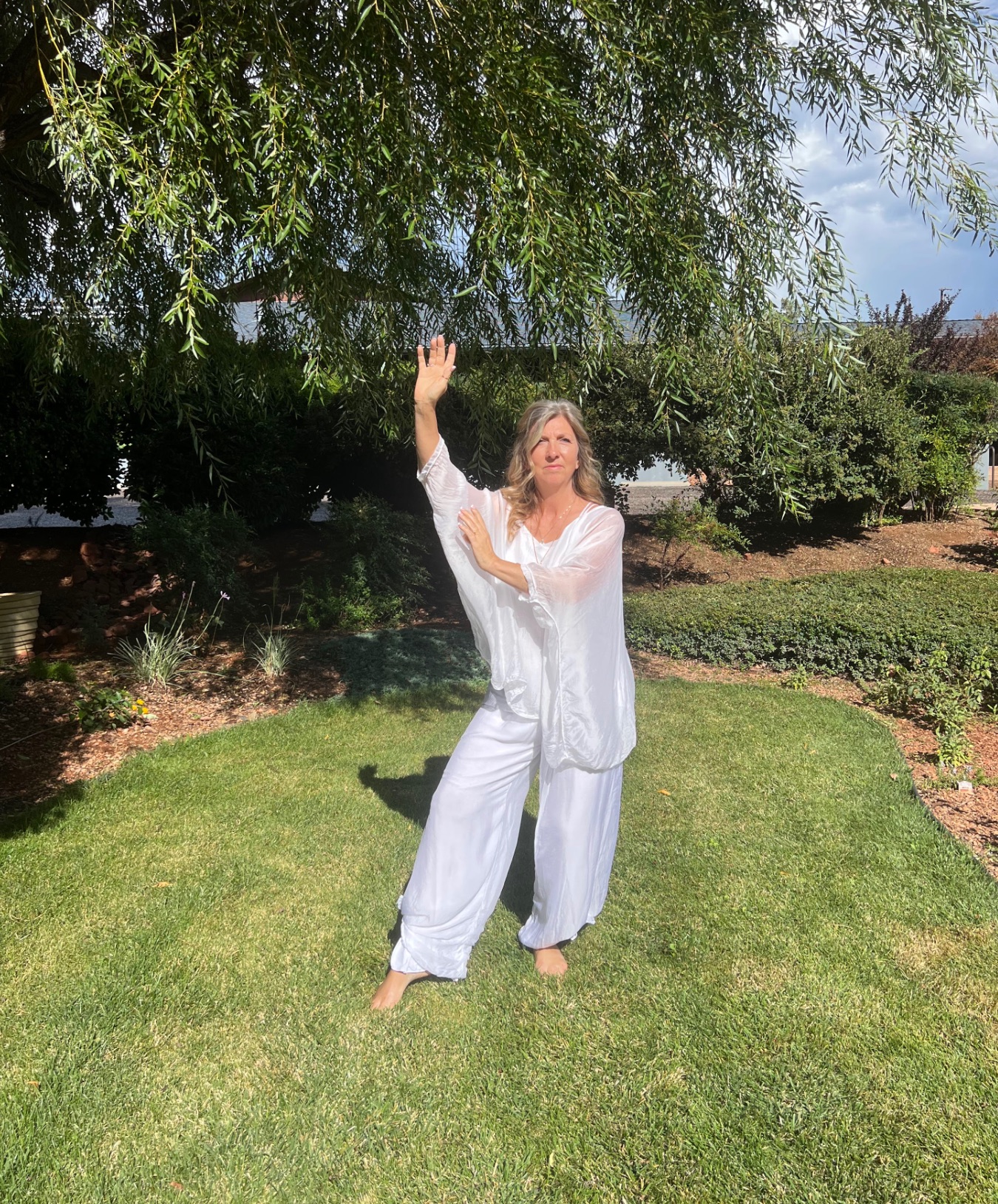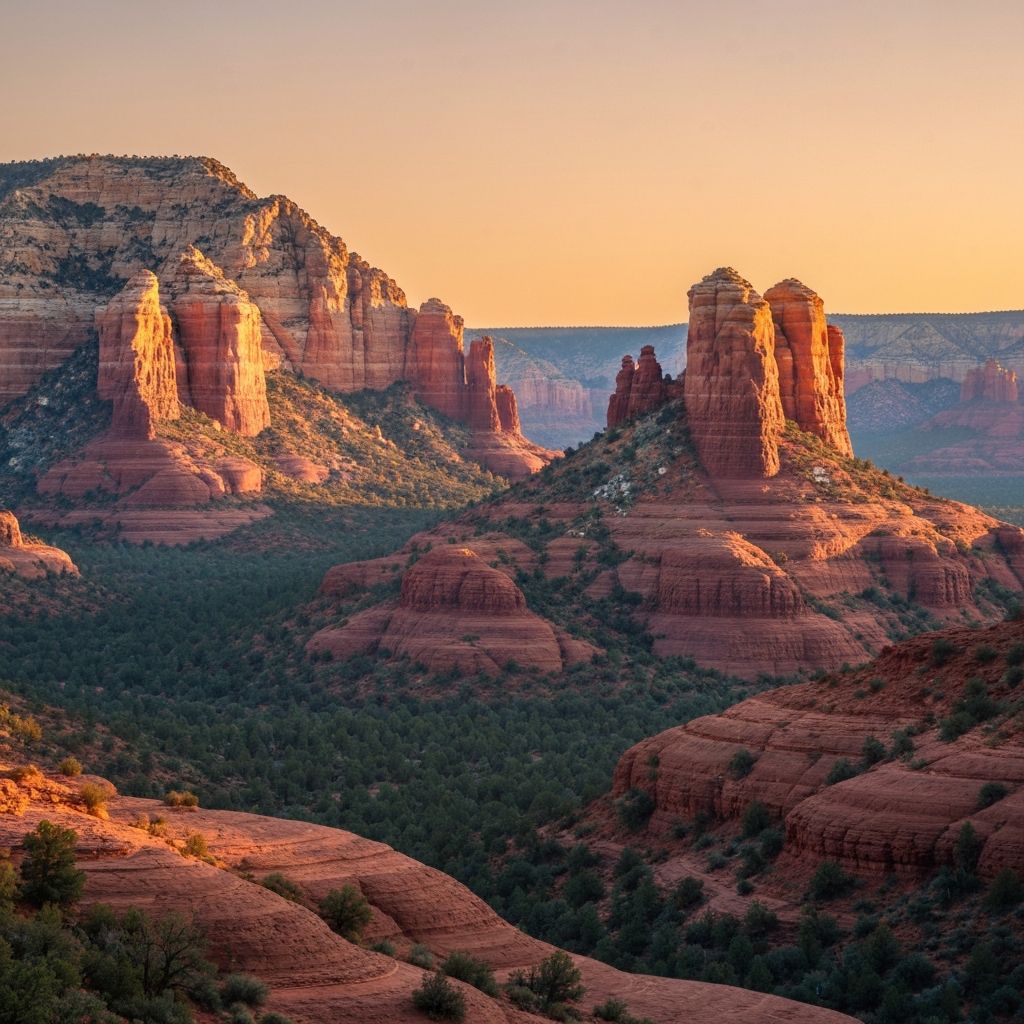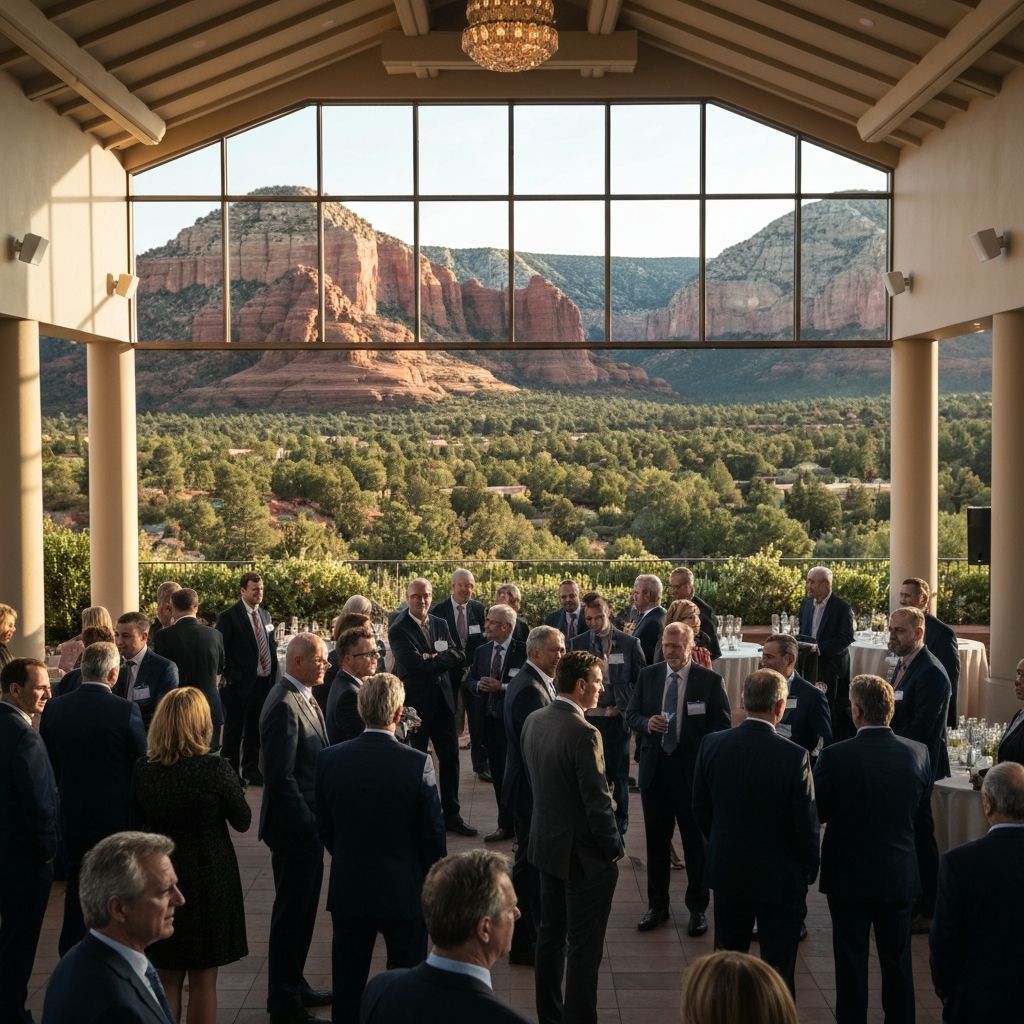Discover the deeper meaning of authentic Indigenous ceremonies in Sedona—where reverence, humility, and respect are the true gateways to transformation. Learn how to approach sacred experiences with integrity and grace on the red rock land once known only to pilgrims.
The Land Before the Words
Before Sedona became a sanctuary for seekers, it was a pilgrimage site for Indigenous peoples across the Southwest—Hopi, Diné (Navajo), Yavapai, Apache, and others. They did not live here. They came to pray, to listen, and to remember.
This land was never a commodity. It was—and remains—a living temple.
To walk upon it is to step into a dialogue with creation itself.
"They came not to live here, but to listen. The land was their teacher."

Sunrise over Cathedral Rock—a living temple where Indigenous peoples have prayed for centuries
Ceremony Is Not a Performance
In today's world, ceremony has become a trend. But to the original keepers of these ways, ceremony is not a show—it's a sacred relationship.
It isn't something one attends or consumes. It's something one enters.
Each gesture, drumbeat, and chant carries ancestral memory—threads of language that predate colonization and commodification.
"Ceremony is not something you do. It is something you enter."

Sacred ceremonial tools—each carrying deep ancestral meaning and reverence
Coming Humble
To come humble is to come without expectation.
To bow your head to the land, to release the impulse to take or document.
True ceremony begins when you stop reaching for meaning and start allowing meaning to reach you.
Show up empty. Let the land fill you.

The sacred fire circle at Sedonya—where ceremony creates a container for transformation
The Weight of History
For many Indigenous healers, to offer ceremony in today's world is an act of courage and remembrance.
Centuries of persecution once made these very rituals illegal.
Today, sharing them publicly can reopen old wounds.
And yet, many still do—because they feel the urgency of this time, and because they carry a prayer for humanity's reconnection.
"To hold ceremony is a radical act of resilience."
When you attend, you are not just joining a circle. You are entering a story that survived against all odds.
The Sacred History of Ceremony
1883-1934: The U.S. government banned Indigenous ceremonies through the "Code of Indian Offenses," making sacred practices illegal
1978: The American Indian Religious Freedom Act finally protected Indigenous spiritual practices
Today: Indigenous elders who share these practices do so as an act of healing and bridge-building for all humanity
The Sacred Container
Every authentic ceremony exists within a container—an invisible field of prayer and protection.
This container is shaped by the facilitator, but also by the energy each participant brings.
When you sit in reverence, you help strengthen the circle.
When you arrive distracted or skeptical, the spirit of the work retreats.
That is why ceremony is never for spectators.
It is for those ready to participate with the whole of their being.

The fire circle creates a sacred container for transformation and healing
How to Honor the Sacred Container
Arrive with intention
Set a personal intention before entering ceremony space. What do you hope to receive? What are you willing to release?
Silence your devices
Phones, cameras, and recording devices disrupt the energetic field. Be fully present without the urge to capture or share.
Listen before speaking
Honor the wisdom being shared. If invited to speak, share from the heart without performing or dominating.
Respect the facilitator's guidance
Trust the process, even if it feels unfamiliar. The facilitator holds the container—your role is to surrender and receive.
Hold confidentiality
What is shared in ceremony stays in ceremony. Honor the vulnerability of others by protecting their stories.
A Return to Reciprocity
Sedona's magnetic pull is more than scenic beauty—it's the energy of reciprocity calling us home.
To walk here consciously is to remember that every gift carries responsibility.
•If you receive healing, offer gratitude.
•If you learn, support Indigenous communities.
•If you witness beauty, protect it.
"To be part of ceremony is to remember that everything we take must also be returned."

An Indigenous elder shares sacred ceremony—an act of courage, resilience, and love
Ways to Practice Reciprocity
Support Indigenous Organizations
Donate to Native-led nonprofits working to preserve culture, language, and sacred sites. Examples: Native American Rights Fund, First Nations Development Institute.
Learn the True History
Educate yourself about the Indigenous peoples whose land you're visiting. Understand the treaties, displacement, and ongoing struggles they face.
Practice Leave No Trace
Protect the land by staying on trails, packing out all trash, and never disturbing sacred sites, petroglyphs, or natural formations.
Honor with Offerings
Traditional offerings like cornmeal, tobacco, or native plants can be made with reverence. Ask your ceremony facilitator for guidance on proper protocol.
Walking Forward
Ceremony, entered with humility, is not an escape—it's a homecoming.
It reconnects us with what is ancient, true, and still alive beneath our modern noise.
When you are called to attend a ceremony in Sedona, arrive not as a tourist, but as a guest.
Come with reverence.
Come to listen.
Come willing to be changed.
Because when ceremony moves through you, it doesn't end when you leave the circle.
It begins.
"When ceremony moves through you, it doesn't end when you leave the circle. It begins."
Frequently Asked Questions
What makes a ceremony authentic?
An authentic ceremony is not a performance or show—it's a sacred relationship. It's something one enters, not something one attends or consumes. Each gesture, drumbeat, and chant carries ancestral memory—threads of language that predate colonization and commodification.
How should I approach attending an Indigenous ceremony?
Come humble—arrive without expectation, bow your head to the land, release the impulse to take or document. True ceremony begins when you stop reaching for meaning and start allowing meaning to reach you. Show up empty and let the land fill you.
Why was Sedona sacred to Indigenous peoples?
Before Sedona became a sanctuary for seekers, it was a pilgrimage site for Indigenous peoples across the Southwest—Hopi, Diné (Navajo), Yavapai, Apache, and others. They did not live here. They came to pray, to listen, and to remember. This land was never a commodity—it was and remains a living temple.
What is the sacred container in ceremony?
Every authentic ceremony exists within a container—an invisible field of prayer and protection shaped by the facilitator and the energy each participant brings. When you sit in reverence, you help strengthen the circle. When you arrive distracted or skeptical, the spirit of the work retreats. Ceremony is never for spectators—it's for those ready to participate with the whole of their being.
How can I practice reciprocity in Sedona?
If you receive healing, offer gratitude. If you learn, support Indigenous communities. If you witness beauty, protect it. Every gift carries responsibility. To be part of ceremony is to remember that everything we take must also be returned.
Experience Authentic Indigenous Wisdom in Sedona
Join us for a curated journey with indigenous wisdom, vortex experiences, and authentic ceremony. Learn from Indigenous elder Uqualla and experience the sacred traditions of Sedona with reverence and respect.

Sonya Belisle
Founder & Curator, Sedonya Conscious Living Center
Sonya Belisle is the founder and curator of Sedonya Conscious Living Center, where she facilitates transformational experiences that honor Indigenous wisdom and sacred traditions. She works closely with Indigenous elder Uqualla to create authentic ceremonial experiences that bridge ancient wisdom with modern consciousness.


